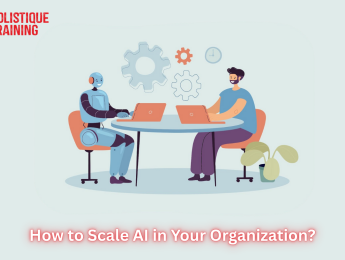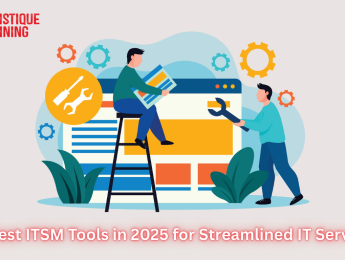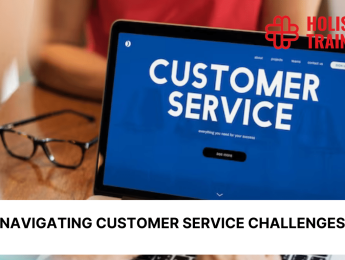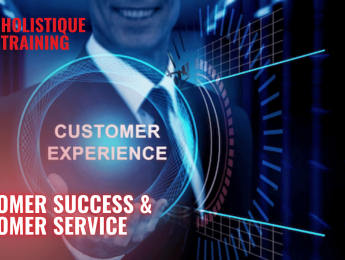- Table of Contents
- Introduction
- What is Scalable AI?
- Why is Scalable AI Important?
- Increased Demand for AI Solutions
- Competitive Advantage
- Cost Efficiency
- Enhanced Collaboration
- Future-Proofing
- Enhanced Customer Experiences
- Data Utilization and Insights
- Challenges of Scaling AI and How to Overcome Them
- 1. Time Constraints
- 2. Scope Creep
- 3. Talent Shortages
- 4. Data Challenges
- 5. Process Inefficiencies
- 6. Tool Selection
- How to Scale AI in Your Organization
- 1. Develop a Clear AI Strategy
- 2. Build a Cross-Functional Team
- 3. Invest in Infrastructure
- 4. Foster a Data-Driven Culture
- 5. Prioritize Use Cases
- 6. Monitor and Evaluate Progress
- 7. Scale Gradually
- 8. Encourage Innovation
- Best Practices in Scaling AI
- 1. Embrace Agility
- 2. Leverage Automation
- 3. Ensure Ethical AI Practices
- 4. Foster Collaboration
- 5. Stay Informed
- The Future of AI in the Workplace
- Enhanced Decision-Making
- Greater Personalization
- Increased Automation
- Evolving Workforce Dynamics
- Continuous Innovation
- Conclusion
Introduction
Artificial Intelligence (AI) has emerged as a transformative force across industries, reshaping how businesses operate, make decisions, and engage with customers. As organizations increasingly recognize the potential of AI, the challenge shifts from merely implementing AI solutions to scaling them effectively across the enterprise. This blog post delves into the concept of scalable AI, its importance, the challenges organizations face in scaling AI, and actionable strategies to overcome these hurdles. By exploring best practices and envisioning the future of AI in the workplace, this post aims to provide a comprehensive guide for organizations looking to harness the full potential of AI.
What is Scalable AI?
Scalable AI refers to the capability of artificial intelligence systems to grow and adapt in response to increasing demands and complexities within an organization. Unlike one-off AI implementations that address specific problems, scalable AI solutions are designed to be integrated into various aspects of a business, allowing for wider application and greater impact.
At its core, scalable AI encompasses several key characteristics:
- Flexibility: The ability to adjust and expand the AI system to accommodate new use cases, data sources, and technologies.
- Interoperability: Seamless integration with existing systems and processes, ensuring that AI can function alongside other tools and technologies.
- Efficiency: Optimized performance that allows for quick processing and analysis of large volumes of data, enabling real-time decision-making.
- Sustainability: The capability to maintain and evolve AI systems over time without significant resource drain or operational disruption.
By ensuring that AI systems are scalable, organizations can maximize their return on investment and foster innovation across departments.
Why is Scalable AI Important?
According to the 2025 Gartner CEO and Senior Business ExecutiveSurvey, a significant number of CEOs are focusing on growth and view AI as a crucial factor in shaping the competitive landscape.
The importance of scalable AI cannot be overstated, especially in a world where data is abundant, and the pace of technological advancement is relentless. With many CEOs prioritizing growth and recognizing AI as a vital element in defining competitive dynamics, organizations should prioritize scalability in their AI initiatives. Here are several key reasons why scalability is essential for effective AI implementation:
Increased Demand for AI Solutions
As businesses across various sectors recognize the transformative potential of AI, the demand for scalable solutions continues to grow. Organizations are not just looking for isolated AI applications; they seek comprehensive systems that can handle increasing workloads and adapt to evolving market conditions. Scalable AI allows businesses to deploy AI solutions across multiple departments and functions, ensuring that the benefits of AI are felt throughout the organization. This widespread adoption can lead to enhanced operational efficiencies and improved customer experiences.
Competitive Advantage
In today's competitive landscape, organizations that successfully scale their AI initiatives can gain a significant edge over their rivals. Scalable AI enables faster insights, improved decision-making, and enhanced customer engagement, all of which contribute to a stronger market position. Companies that leverage AI effectively can respond more quickly to customer needs, anticipate market trends, and innovate their offerings. This agility not only helps in retaining existing customers but also attracts new ones, thereby driving growth.
Cost Efficiency
One of the most compelling reasons to scale AI is the potential for cost savings. Scalable AI reduces the need for duplicate efforts and allows organizations to maximize their existing resources. By building on established AI frameworks and processes, businesses can avoid the costs associated with reinventing solutions for different departments or projects. Additionally, scaling AI can lead to improved operational efficiencies, reducing time spent on manual tasks and freeing up resources for more strategic initiatives. This efficiency ultimately translates into lower operational costs and higher profit margins.
Enhanced Collaboration
Scalable AI fosters collaboration across various departments within an organization. When AI solutions are designed to be integrated and interoperable, teams can share insights, data, and resources more effectively. This collaborative environment enhances innovation, as employees from different backgrounds and expertise come together to solve complex problems. By breaking down silos and promoting teamwork, organizations can leverage diverse perspectives and drive more impactful AI initiatives.
Future-Proofing
As technology continues to evolve, organizations must be prepared to adapt to new challenges and opportunities. Scalable AI systems are inherently designed to evolve alongside changing technologies and market demands. This adaptability ensures that organizations remain relevant and competitive in a rapidly changing landscape. By investing in scalable AI, businesses can future-proof their operations, allowing them to pivot quickly in response to new trends, consumer behaviors, and technological advancements.
Enhanced Customer Experiences
In an era where customer expectations are at an all-time high, scalable AI plays a crucial role in delivering personalized and responsive experiences. Organizations can leverage AI to analyze customer data and preferences, enabling them to tailor products, services, and interactions accordingly. Scalable AI allows businesses to implement these personalized solutions at scale, ensuring that every customer interaction is meaningful and relevant. This focus on customer experience not only drives satisfaction but also fosters loyalty and long-term relationships.
Data Utilization and Insights
Organizations today are inundated with data from various sources. Scalable AI enables businesses to harness this data effectively, transforming it into actionable insights. By scaling AI initiatives, organizations can analyze larger datasets more efficiently, uncovering trends and patterns that inform decision-making. This data-driven approach empowers businesses to make informed choices, optimize operations, and identify new opportunities for growth. The ability to leverage data at scale is a key differentiator in the modern business landscape.
In summary, scalable AI is essential for organizations looking to thrive in an increasingly complex and competitive environment. Its ability to enhance operational efficiency, foster collaboration, and deliver personalized experiences positions businesses for long-term success. As organizations continue to invest in AI, prioritizing scalability will be critical to unlocking the full potential of this transformative technology.
Challenges of Scaling AI and How to Overcome Them
Despite the significant benefits of scalable AI, organizations often encounter various challenges when attempting to scale their AI initiatives. Understanding these challenges and developing strategies to overcome them is crucial for success.
1. Time Constraints
Scaling AI can be a time-consuming process, as it often requires extensive planning, development, and testing. According to OCI, nearly80% of AI projects fail to progress beyond the proof of concept stage, and those that do successfully scale can take anywhere from three to 36 months to implement, depending on their scope and complexity. Organizations may struggle to allocate adequate time for these activities, leading to rushed implementations that can undermine the effectiveness of their AI initiatives.
Solution: Establish a clear roadmap for AI scaling initiatives. Break down the process into manageable phases, allowing for iterative development and continuous improvement. Prioritize quick wins to demonstrate value early on, which can help secure ongoing support and resources.
2. Scope Creep
As organizations identify new opportunities for AI, the scope of projects can expand rapidly, leading to confusion and misalignment among stakeholders.
Solution: Define clear objectives and success metrics at the outset of each AI project. Maintain regular communication with stakeholders to ensure alignment and manage expectations. Use agile methodologies to adapt to changing requirements while keeping the project focused.
3. Talent Shortages
The demand for AI expertise often exceeds the available talent pool. Organizations may struggle to find skilled professionals who can drive AI initiatives.
Solution: Invest in training and development programs for existing employees. Encourage a culture of continuous learning and provide resources for employees to upskill in AI-related areas. Collaborate with educational institutions to create internship programs that can help build a pipeline of future talent.
4. Data Challenges
Data is the backbone of AI. Organizations often face challenges related to data quality, accessibility, and integration from disparate sources.
Solution: Implement robust data governance practices to ensure data quality and consistency. Invest indata management tools that facilitate seamless integration across systems. Encourage data sharing and collaboration between departments to create a holistic view of organizational data.
5. Process Inefficiencies
Existing processes may not be optimized for AI integration, leading to bottlenecks and inefficiencies.
Solution: Conduct a thorough analysis of existing processes to identify areas for improvement. Streamline workflows and eliminate unnecessary steps to create a more efficient environment for AI deployment. Foster a culture of innovation that encourages employees to suggest process improvements.
6. Tool Selection
With a plethora of AI tools available, organizations can struggle to choose the right ones that align with their goals.
Solution: Conduct a comprehensive assessment of available tools based on organizational needs and objectives. Engage stakeholders in the selection process to ensure buy-in and alignment. Consider pilot programs to test tools before full-scale implementation.
Here’s a table summarizing the challenges of scaling AI, with solutions for each:
Challenges of Scaling AI | Solutions |
Lack of Clear Strategy | Develop a comprehensive AI strategy aligned with business goals |
Data Quality Issues | Implement robust data governance and quality assurance practices |
Insufficient Talent | Invest in training and hiring skilled professionals in AI and data science |
Integration with Existing Systems | Prioritize compatibility and invest in middleware solutions for smooth integration |
Change Management Resistance | Foster a culture of innovation and provide change management training |
Scalability of Technology | Choose scalable AI platforms and technologies that can grow with the organization |
How to Scale AI in Your Organization
Scaling AI effectively requires a structured approach that encompasses strategic planning, resource allocation, and ongoing evaluation. Here are key steps organizations can take to scale AI successfully:
1. Develop a Clear AI Strategy
Establishing a comprehensive AI strategy is the foundation for successful scaling. This strategy should align with the organization’s overall business objectives and outline the vision for AI integration. Key components of the strategy include:
- Vision and Goals: Define what the organization aims to achieve with AI. This could range from improving operational efficiency to enhancing customer experiences or driving innovation.
- Use Cases: Identify specific use cases that align with strategic objectives. Prioritize these use cases based on their potential impact and feasibility.
- Resource Allocation: Determine the resources required, including personnel, budget, and technology, to support AI initiatives. This ensures that the organization is adequately prepared for implementation.
2. Build a Cross-Functional Team
Creating a cross-functional team is essential for driving AI initiatives. This team should include representatives from various departments, such as IT, data science, operations, marketing, and business units. The benefits of a cross-functional team include:
- Diverse Perspectives: Team members from different backgrounds bring unique insights and expertise, leading to more well-rounded AI solutions.
- Alignment: A cross-functional team ensures that AI initiatives align with the needs and goals of various departments, fostering collaboration and buy-in.
- Shared Responsibility: Distributing responsibilities across departments encourages accountability and shared ownership of AI projects.
3. Invest in Infrastructure
A robust infrastructure is critical for supporting AI initiatives. Organizations should assess their current technological capabilities and invest in the necessary resources, including:
- Cloud Computing: Leveraging cloud services allows organizations to scale their computing power and storage capabilities as needed, accommodating large datasets and complex algorithms.
- Data Management Solutions: Implementing data management tools facilitates seamless integration and accessibility of data from various sources, ensuring that AI systems have the information they need to function effectively.
- Analytics and Visualization Tools: Investing in advanced analytics tools enables organizations to analyze and visualize data insights, making it easier to derive actionable conclusions from AI outputs.

4. Foster a Data-Driven Culture
Encouraging a culture that values data-driven decision-making is essential for scaling AI. Organizations can foster this culture by:
- Training and Education: Provide training programs to help employees understand the importance of data and how to leverage it effectively. This could include workshops, seminars, or online courses focused on data literacy and AI concepts.
- Leadership Support: Leadership should actively promote the use of data in decision-making processes, demonstrating its value through their own actions and encouraging teams to adopt similar practices.
- Recognition of Success: Celebrate successes that arise from data-driven initiatives. Recognizing teams and individuals who effectively use data to drive results reinforces the importance of a data-centric approach.
5. Prioritize Use Cases
Identifying and prioritizing use cases that offer the greatest potential for impact is crucial for scaling AI effectively. Organizations should:
- Conduct a Needs Assessment: Evaluate organizational needs and pain points to identify areas where AI can provide significant value. Consider both short-term and long-term goals.
- Focus on Quick Wins: Start with projects that can deliver quick wins, demonstrating the value of AI to stakeholders and building momentum for larger initiatives. Quick wins can help secure ongoing support and resources for future projects.
- Iterate and Expand: Once initial use cases are successfully implemented, use the insights gained to iterate and expand into more complex projects. This gradual approach minimizes risk and allows for continuous learning.
6. Monitor and Evaluate Progress
Implementing a system for monitoring and evaluating the progress of AI initiatives is essential for ensuring ongoing success. Organizations should:
- Establish Key Performance Indicators (KPIs): Define KPIs that align with the objectives of each AI project. These metrics should measure both quantitative and qualitative outcomes. Here are some examples:
KPI | Description |
Accuracy Rate | Measures the percentage of correct predictions made by the AI model. |
Time to Insight | Tracks the time taken to generate actionable insights from data. |
Cost Savings | Evaluates the reduction in operational costs due to AI implementation. |
User Satisfaction | Assesses the satisfaction level of users interacting with AI solutions. |
Return on Investment (ROI) | Calculates the financial return generated from AI initiatives relative to their cost. |
- Regularly Review Progress: Hold regular meetings to review progress against established KPIs. This allows teams to identify challenges early and make necessary adjustments to stay on track.
- Solicit Feedback: Gather feedback from stakeholders and end-users to assess the effectiveness of AI solutions. This input can inform future improvements and adaptations.
7. Scale Gradually
Starting with pilot projects to test AI solutions before scaling them across the organization is a prudent approach. Organizations should:
- Select Pilot Projects Wisely: Choose pilot projects that are manageable in scope but have the potential to demonstrate significant value. This helps build confidence in AI initiatives and encourages broader adoption.
- Learn from Pilots: Use insights gained during pilot projects to refine processes, address challenges, and improve implementation strategies. Document lessons learned to inform future scaling efforts.
- Plan for Broader Implementation: Once pilot projects are successful, develop a detailed plan for scaling AI solutions across the organization. This plan should outline timelines, resource requirements, and potential challenges.
8. Encourage Innovation
Creating an environment that encourages experimentation andinnovation is vital for scaling AI. Organizations can foster this culture by:
- Promoting Creativity: Encourage teams to explore new ideas and approaches to AI, allowing them to experiment with different algorithms, models, and applications. This freedom can lead to innovative solutions that drive business growth.
- Providing Resources: Allocate resources for research and development in AI. This could include funding for exploratory projects, access to training programs, or partnerships with academic institutions.
- Recognizing and Rewarding Innovation: Celebrate and reward teams that successfully implement innovative AI solutions. Recognizing their efforts not only boosts morale but also motivates others to pursue creative approaches.
By following these steps, organizations can effectively scale their AI initiatives, maximizing the benefits of this transformative technology. With a clear strategy, a collaborative team, and a commitment to continuous improvement, businesses can navigate the complexities of scaling AI and position themselves for long-term success in the digital age.
Best Practices in Scaling AI
To maximize the effectiveness of AI scaling initiatives, organizations should adopt best practices that promote success:
1. Embrace Agility
Adopt agile methodologies to enable rapid iterations and adjustments in AI projects. This flexibility allows organizations to respond quickly to changing requirements and market conditions.
2. Leverage Automation
Utilize automation tools to streamline repetitive tasks and enhance efficiency. Automating data collection, analysis, and reporting can free up valuable resources for more strategic activities.
3. Ensure Ethical AI Practices
Prioritizeethical considerations in AI development and deployment. Establish guidelines for responsible AI use, ensuring transparency, fairness, and accountability in AI decision-making processes.
4. Foster Collaboration
Encourage collaboration between technical and non-technical teams. Bridging the gap between data scientists and business leaders can lead to more relevant AI solutions that address real organizational challenges.
5. Stay Informed
Keep abreast of the latest trends and advancements in AI technology. Participating in industry conferences, webinars, and training programs can help organizations stay ahead of the curve and leverage emerging opportunities.
The Future of AI in the Workplace
The future of AI in the workplace promises to be transformative, with advancements in technology enabling even greater integration of AI into daily operations. Organizations that embrace scalable AI will be better positioned to navigate the complexities of the modern business landscape.
Enhanced Decision-Making
AI will continue to enhance decision-making processes, providing insights and recommendations based on vast amounts of data. As AI systems become more sophisticated, organizations will be able to make more informed and timely decisions.
Greater Personalization
AI will enable organizations to deliver more personalized experiences to customers and employees. By leveraging data insights, businesses can tailor products, services, and interactions to meet individual needs and preferences.
Increased Automation
The automation of routine tasks will continue to expand, allowing employees to focus on higher-value activities. This shift will lead to increased productivity and job satisfaction, as employees engage in more meaningful work.
Evolving Workforce Dynamics
As AI systems take on more responsibilities, the dynamics of the workforce will evolve. Organizations will need to invest in upskilling employees to work alongside AI, fostering a collaborative relationship between humans and machines.
Continuous Innovation
The pace of innovation in AI will accelerate, leading to new applications and use cases across industries. Organizations that prioritize scalable AI will be well-positioned to capitalize on these advancements and drive continuous improvement.
Conclusion
Scaling AI in an organization is a multifaceted endeavor that requires careful planning, collaboration, and a commitment to continuous improvement. By understanding the concept of scalable AI, recognizing its importance, and addressing the challenges that arise, organizations can successfully leverage AI to drive innovation and achieve their strategic objectives. Implementing best practices and fostering a culture of data-driven decision-making will further enhance the effectiveness of AI initiatives. As organizations look to the future, embracing scalable AI will not only provide a competitive advantage but also pave the way for a more efficient, innovative, and responsive workplace. The journey of scaling AI is ongoing, but with the right strategies in place, organizations can unlock the full potential of this transformative technology.
To equip business leaders with the knowledge and skills necessary for navigating this evolving landscape, we offer the course "Artificial Intelligence for Business Leaders." This course provides insights into the strategic implementation of AI, helping leaders understand how to integrate AI solutions effectively within their organizations. By enrolling, you will gain practical tools and frameworks to drive AI initiatives, foster innovation, and lead your organization toward a successful AI-driven future. Join us to enhance your leadership capabilities and harness the power of AI to transform your business.

























